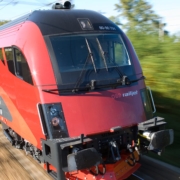Trends in Requirements Engineering – Methodological Digital Transformation
“Why do we still need requirements? We’re agile!” Have you ever heard something like that? In these times of rapid innovation, just the term requirements engineering sounds pretty laborious. Nevertheless, just in view of the radical transformation of companies and business models, requirements engineering is playing a central role in managing digital transformation. However, making this possible also requires a transformation in the methods applied. As a result, in this blog article we present you with the latest trends in requirements engineering.
All too often innovation pressure, whether real or imagined (“We need to innovate!”), results in projects which get bogged down before they’re halfway done and result in horrendous costs. Why does this happen? Because the requirements gathered aren’t specific or accurate enough. This is because, as has been long accepted in the field of IT, requirements engineering is one of the most important factors determining the success of a project. As a result, many organizations have made great efforts to ensure that their requirements are correct and that they flow into their projects in a well-coordinated manner and at the right time. And in addition to conventional methods, those organizations are also relying more and more on agile processes.
The Challenge of Digital Transformation
So where does the challenge lie? In spite of sound methodological principles, projects which focus heavily on digitally transforming large companies or organizations often feel that conventional requirements engineering methods are inadequate. Those methods are sometimes seen as not being practical, and are also often considered to be too slow and excessive. Agility is apparently not always an adequate solution here either, since agile requirements engineering methods are sometimes considered to be relevant only to development, or they’re seen as too superficial and not suitable for complex tasks. In a nutshell, established requirements engineering tools fall short when it comes to managing digital change.
“These days, a requirements engineer is faced with great changes – approaches in this field have undergone fundamental change, and in some cases have even turned completely upside down.”
Karl Schott, CEO Spirit in Projects
Trend: The Moving Target
No one who works in the field of requirements engineering for an organization committed to digital change will be able to implement projects as they did previously and still be successful. The reason for this is that role of requirements engineer has fundamentally changed:
“More and more, requirements engineers are finding themselves back in digital transformation projects, and although those projects are driven by a vision and strategic goals, neither the path which needs to be taken, nor the actual benefits of the project nor the strategic technology for implementation actually exist, and need to be first worked out over the course of the project.”
Karl Schott, CEO Spirit in Projects
This is reflected in the problems of the industry, and in the current discussion going on in research surrounding the subject of ubiquitous requirements engineering. When it comes to innovation processes, the theme of requirements analysis forms a framework which surrounds the entire project.
Aspects of Ubiquitous Requirements Engineering
The term ubiquitous refers to the fact that requirements engineering is omnipresent in innovation projects. This results in a number of problems and changes which in our opinion account for the current trends in requirements engineering:
Open ended: Analysis projects for establishing technical ecosystems must be implemented without clear end criteria.
Holistic approach: A holistic approach will move into focus if the solution affects your environment so strongly in terms of technology and organization that clear boundaries cannot be established for the analysis.
Borderless systems: Systems cross borders in cases where the solution is being developed and used across regions or globally and participants are difficult to manage in terms of location and/or time.
Everyone: Many voices will be included in the conversation when the digital transformation results in the inclusion of an increasing number of stakeholders who are unable to provide expertise in the development of solution ideas.
Crowd: When it can no longer be determined whether users are key stakeholders or if it’s not even clear whether they’re actual people, the elicitation of requirements must be performed automatically.
Outside the comfort zone: When the problem to be solved can no longer be analyzed using an organization’s own know-how and skills, but solving the problem instead requires collaboration which crosses different domains, organizations and/or companies – that’s “being outside the zone of comfort”.
An important trend is also how the role of requirements engineering has changed for companies themselves – it no longer concerns “just” eliciting requirements, but instead bringing in possible technologies and solution approaches at a very early stage. The trend is moving towards requirements engineering providing even more:
Strategic consulting: This is because corporate strategies are relying more and more on the use of technologies to find and implement solutions.
Business enabler: In cases where the possibility of using technologies determines market success.
Orientation toward disruptive technologies: In cases where new technologies are being brought in to make it possible for a company’s new requirements to exist in the first place.
These trends point to a development we refer to as “new requirements engineering”. Our website contains detailed articles on our related practical experience we’ve gained from actual projects; incidentally you can also read more here about our consulting approach in the area of requirements management.










